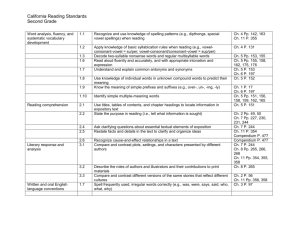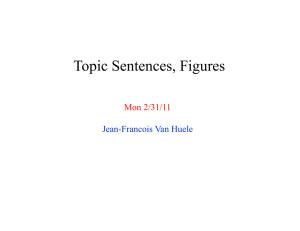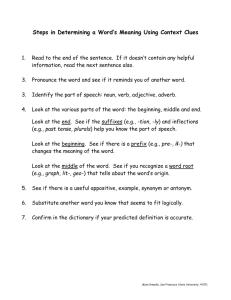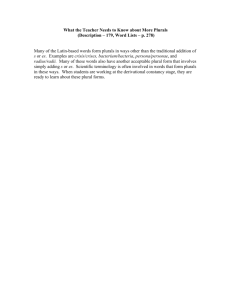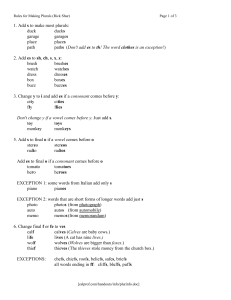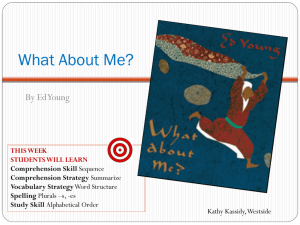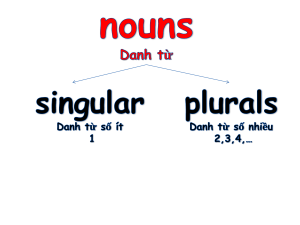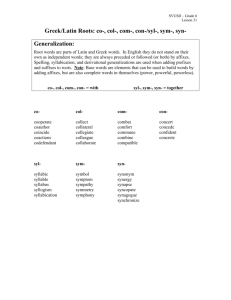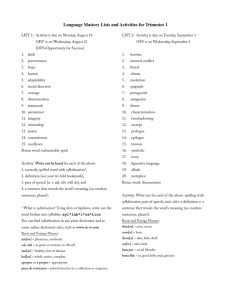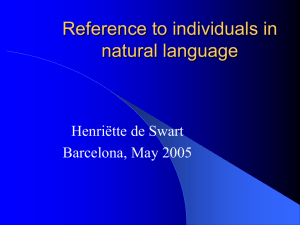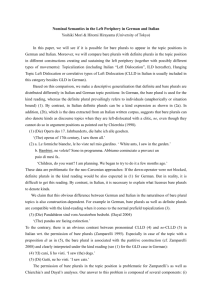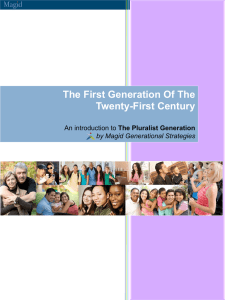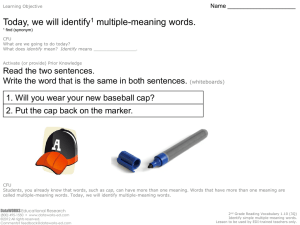Reading Standards
advertisement
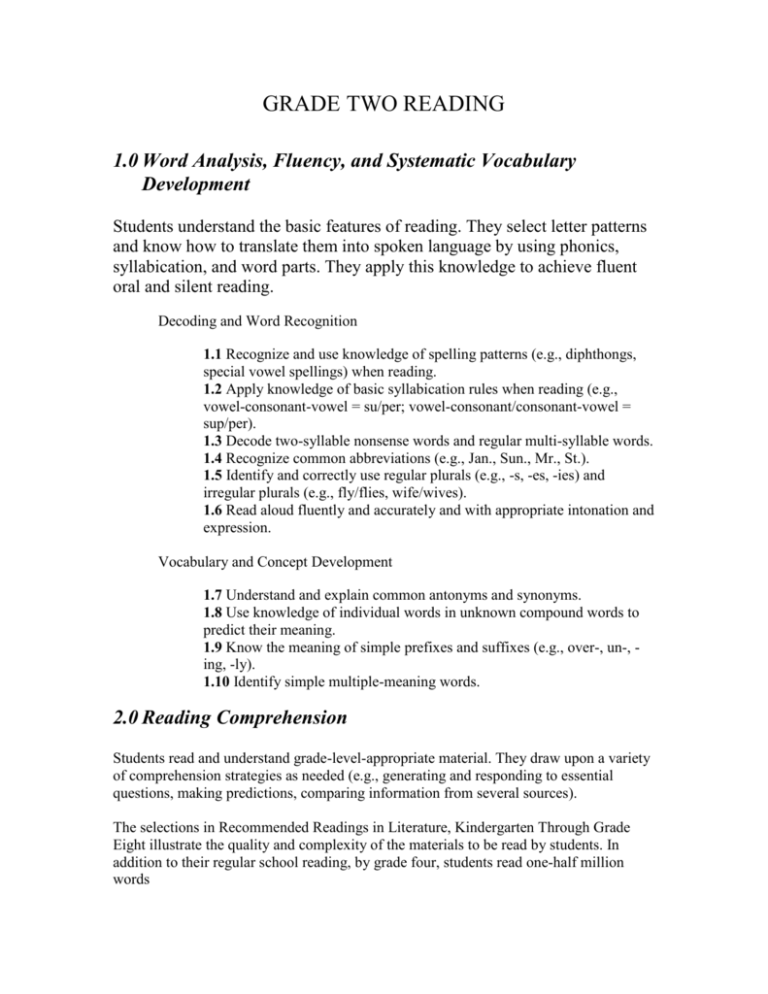
GRADE TWO READING 1.0 Word Analysis, Fluency, and Systematic Vocabulary Development Students understand the basic features of reading. They select letter patterns and know how to translate them into spoken language by using phonics, syllabication, and word parts. They apply this knowledge to achieve fluent oral and silent reading. Decoding and Word Recognition 1.1 Recognize and use knowledge of spelling patterns (e.g., diphthongs, special vowel spellings) when reading. 1.2 Apply knowledge of basic syllabication rules when reading (e.g., vowel-consonant-vowel = su/per; vowel-consonant/consonant-vowel = sup/per). 1.3 Decode two-syllable nonsense words and regular multi-syllable words. 1.4 Recognize common abbreviations (e.g., Jan., Sun., Mr., St.). 1.5 Identify and correctly use regular plurals (e.g., -s, -es, -ies) and irregular plurals (e.g., fly/flies, wife/wives). 1.6 Read aloud fluently and accurately and with appropriate intonation and expression. Vocabulary and Concept Development 1.7 Understand and explain common antonyms and synonyms. 1.8 Use knowledge of individual words in unknown compound words to predict their meaning. 1.9 Know the meaning of simple prefixes and suffixes (e.g., over-, un-, ing, -ly). 1.10 Identify simple multiple-meaning words. 2.0 Reading Comprehension Students read and understand grade-level-appropriate material. They draw upon a variety of comprehension strategies as needed (e.g., generating and responding to essential questions, making predictions, comparing information from several sources). The selections in Recommended Readings in Literature, Kindergarten Through Grade Eight illustrate the quality and complexity of the materials to be read by students. In addition to their regular school reading, by grade four, students read one-half million words
